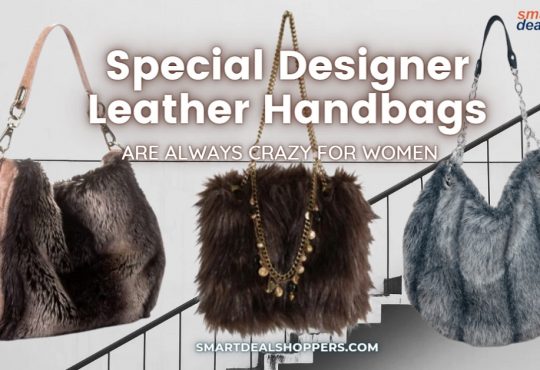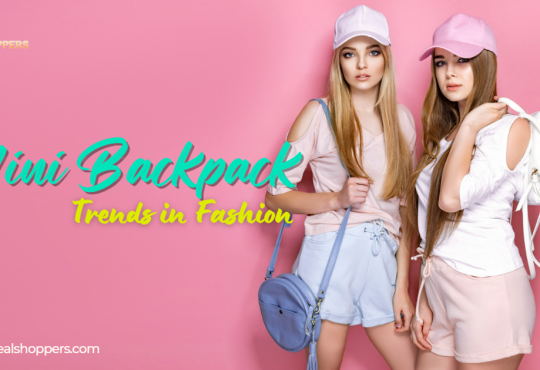
Designer bags have long been more than accessories—they are status symbols, investments, and art pieces. From Chanel to Louis Vuitton, owning a authentic designer bag brings aesthetic appeal and a sense of pride in craftsmanship. However, the booming counterfeit market threatens the authenticity of these prized possessions. With knock-offs becoming more sophisticated, fashion enthusiasts must distinguish between a real and a fake designer bag. Not only does buying counterfeit goods support unethical labor practices, but it also takes away from the craftsmanship and exclusivity of luxury brands. If you want to make a confident purchase, this guide will help you identify the telltale signs of a genuine designer bag.
1. Scrutinize the Materials
A hallmark of any authentic designer bag is its impeccable quality, particularly regarding materials. Luxury brands source only the finest materials, ensuring their bags possess a premium feel and durability that counterfeit versions lack. Genuine leather exhibits a buttery texture, natural grain, and a distinct scent of real hide, while fake leather often feels plasticky and has a strong chemical odor.
High-end brands that use vegan leather, like Stella McCartney, ensure that their materials mimic the luxurious feel of genuine leather, whereas counterfeits tend to feel cheap and rubbery. Designer canvas and denim are equally refined, with thick and durable weaves, even coloration, and a structured form. If the fabric of a supposed designer bag feels flimsy, overly stiff, or rough, it may not be the real deal.
Identifying authentic materials requires careful examination, as luxury bags are crafted with meticulous attention to detail. The fabric quality should be consistent throughout the bag, with no areas appearing thinner or less structured than others. Authentic materials age gracefully, developing a patina in the case of leather, while fakes often show premature wear or cracking.
Some designer brands incorporate unique characteristics into their materials, such as water-resistant coatings or proprietary textile blends, which counterfeit manufacturers fail to replicate. Running your fingers over the material should provide a sensation of durability and smoothness rather than an artificial or waxy texture. Also, authentic bags will never exhibit loose fibers, fraying, or uneven textures, distinguishing them from counterfeits. By scrutinizing the materials, a buyer can make a more informed decision and avoid purchasing an imitation.
2. Inspect the Logo
Luxury brands invest heavily in the precision of their logos, making them one of the most recognizable and meticulously crafted features of an authentic designer bag. Counterfeit manufacturers often attempt to recreate logos but frequently make small mistakes to circumvent copyright laws. As a result, minor font, spacing, and alignment discrepancies can signal a fake. When inspecting a bag’s logo, compare it with official images from the brand’s website, paying close attention to the letter thickness and symmetry. Some luxury bags also include logos embossed into the interior lining, which should be evenly printed and not appear blurry or faded. If the logo appears off-center, slightly stretched, or misaligned, it is likely a counterfeit product.
Beyond placement and alignment, authentic designer logos are engraved, embossed, or printed using high-precision techniques. Brands such as Hermès and Prada use laser engraving to create sharp, clean logos that do not fade or scratch off easily. In contrast, counterfeit logos are often shallow, inconsistent, or stamped with low-quality techniques.
The color and texture of the logo’s printing should seamlessly blend with the bag’s overall design without peeling or chipping. Some brands also incorporate micro-engraved security markings within their logos, making replicating it even more difficult for counterfeiters. Checking for brand-specific logo features and comparing them with official product images ensures the bag is authentic. A poorly executed or misspelled logo is an immediate red flag for a counterfeit item.
3. Examine the Hardware
One of the easiest ways to differentiate an authentic designer bag from a counterfeit is by carefully inspecting the hardware. Genuine luxury bags use high-quality metal hardware that feels solid, heavy, and durable, while fake bags often feature hollow, lightweight, and cheaply coated metal. Authentic hardware is commonly crafted from brass, gold, or silver-plated metal, ensuring longevity and resistance to tarnishing.
Counterfeit versions may appear similar at first glance but often use painted plastic or low-grade metal that fades or chips over time. Running your fingers over the hardware should reveal a smooth, polished surface rather than a rough or uneven texture. The weight of authentic metal components is noticeably heavier, reinforcing the quality and craftsmanship of a designer bag.
Additionally, designer brands pay meticulous attention to the engraving and stamping on their hardware. Luxury brands such as Louis Vuitton and Chanel engrave their logos precisely, ensuring that every detail is clearly defined. In contrast, counterfeit engravings tend to be shallow, blurry, or misaligned. High-end bags also use premium zippers, such as those from YKK, Lampo, or Riri, which provide smooth operation without snagging or resistance. A zipper that feels rough or flimsy could indicate a counterfeit product. Clasps, buckles, and other metal details should function seamlessly without stiffness or rattling noises. A buyer can distinguish an authentic luxury bag from an imitation by examining the hardware components’ weight, engraving quality, and smoothness.
4. Pay Close Attention to Stitchwork
Luxury bags are known for their exceptional craftsmanship, with precise and consistent stitchwork that enhances durability and aesthetics. One of the key indicators of authenticity is the uniformity of the stitching, as designer brands ensure that every stitch is evenly spaced and tightly secured. Counterfeit bags often have irregular or sloppy stitching, with inconsistent lengths or loose threads. Authentic bags use strong, durable thread that does not fray or unravel over time, while fakes may show weak or uneven stitching that easily comes apart. Running a finger along the seams of a designer bag should reveal a smooth, even texture without any bumps or excess thread. Any signs of crooked stitches or skipped threads indicate a counterfeit.
Another distinguishing factor in stitchwork is the use of brand-specific stitching techniques. For example, Hermès employs a signature saddle stitch method that is meticulously handcrafted, making it nearly impossible to replicate with mass-produced counterfeits. Authentic luxury bags do not rely on glue to hold pieces together, as superior stitching provides lasting durability. If there are visible glue marks along the seams or edges, it is a clear warning sign of a fake. Additionally, designer bags have reinforced stitching in high-stress areas, such as handles and strap attachments, ensuring longevity. By closely examining the stitching quality and consistency, one can determine whether a bag is a designer masterpiece or an imitation.
5. Peep the Lining
The interior lining of a designer bag is just as crucial as its exterior, as luxury brands invest in high-quality fabrics that provide a refined and durable finish. Many counterfeit bags cut corners regarding lining materials, opting for thin, low-quality fabric that quickly wears out. Authentic designer bags use premium linings such as microsuede, silk, or structured canvas, which feel smooth and sturdy. If the lining appears flimsy, wrinkled, or loosely stitched, it is likely an imitation. Some brands, like Louis Vuitton, incorporate signature linings with monogram prints or striped patterns, making it easier to spot inconsistencies.
Aside from fabric quality, the construction of the lining also plays a key role in determining authenticity. The interior should be neatly stitched with no visible gaps or sagging, as luxury brands maintain a flawless finish. Counterfeit bags often have loosely attached linings, creating a bunched-up or uneven look. The color and pattern of the lining should match the brand’s official design, as many counterfeiters use incorrect shades or designs. Additionally, authentic bags feature well-structured interior compartments with consistent pocket placements, while fakes may have asymmetrical or oddly shaped sections. Examining the lining’s material, stitching, and design ensures that the bag meets the high standards of an authentic luxury product.
6. Fact Check the Details
The smallest design details can reveal whether a designer bag is genuine or counterfeit. Many counterfeiters overlook or alter subtle elements, as they cannot access luxury brands’ exact manufacturing techniques. One of the easiest ways to verify authenticity is by checking the accuracy of the bag’s color. Counterfeit bags often have slightly off shades or faded hues compared to official brand images. The interior layout is another critical detail, as designer brands maintain a consistent pocket placement and organization across their collections. The bag may not be authentic if the compartments appear misaligned or disproportionate.
Serial numbers and authenticity cards provide another layer of verification but should be cross-checked with official sources. Brands like Chanel and Gucci include unique serial numbers, but counterfeiters have become skilled at replicating them. Researching these details’ correct font, placement, and spacing can help distinguish real from fake. Additionally, designer bags come with dust bags, authenticity certificates, and branded packaging that counterfeit sellers often fail to replicate. By meticulously fact-checking each design element, a buyer can confidently determine the authenticity of a designer bag.
7. When in Doubt, Shop from the Source
One of the safest ways to ensure the authenticity of a designer bag is to purchase it directly from the brand or an authorized retailer. While secondhand markets may offer attractive discounts, they also have a significant risk of counterfeit products. Luxury brands invest in high-quality materials and craftsmanship, reflected in their official packaging, receipts, and certificates of authenticity. Counterfeit sellers often fail to provide these verification documents, making it easier to identify fraudulent products. Additionally, buying from an official retailer guarantees the bag has undergone rigorous quality control inspections before reaching the customer. Ensuring that a purchase comes from a legitimate source eliminates the stress of verifying authenticity and minimizes the risk of acquiring a fake.
Another advantage of shopping from official sources is the access to warranty services and customer support. Designer brands offer repair services and guarantees that counterfeit sellers cannot provide. If an issue arises with an authentic bag, authorized retailers can give guidance on repairs, replacements, or maintenance, ensuring the product remains in top condition.
Ethical considerations also play a role in purchasing directly from the brand, as it supports fair labor practices and sustainable manufacturing. Counterfeit bags are often produced in exploitative conditions, using substandard materials and illegal labor. For those considering secondhand purchases, reputable platforms such as The RealReal, Vestiaire Collective, and Fashionphile employ authentication experts to verify products. Taking these precautions ensures that buyers receive genuine luxury items while avoiding the pitfalls of counterfeit goods.
The Impact of Counterfeit Goods
Buying counterfeit designer bags doesn’t just mean receiving a lower-quality product—it also has far-reaching consequences. The counterfeit market harms both consumers and the fashion industry in multiple ways:
- Brand Reputation & Revenue Loss: Luxury brands invest millions in craftsmanship and innovation. Counterfeits dilute their brand image and result in revenue losses.
- Exploitation of Workers: Many counterfeit products are made in unethical conditions, exploiting workers with unsafe environments and unfair wages.
- Potential Safety Hazards: Fake bags often use low-quality materials that may contain toxic chemicals or break down quickly, leading to waste.
By choosing authenticity, consumers support ethical business practices and ensure they are investing in quality, craftsmanship, and sustainability.
Invest in Authentic Designer Bags with Confidence
Authentic designer bags are more than just fashion statements—they are symbols of craftsmanship, heritage, and exclusivity. Spotting a fake requires careful attention to materials, logos, hardware, stitching, linings, and small design details. While counterfeit products may seem like a cheaper alternative, they come with ethical and quality concerns. Always purchase from official brand stores or reputable resale platforms when in doubt. Armed with these expert tips, you can confidently invest in an authentic luxury bag that will stand the test of time.




